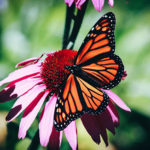How do you land your photo on the cover of the National Geographic? And how does the magazine choose the few photos they publish out of the thousands offered to them? If you’ve ever asked yourself these questions, you’ll definitely want to take a peek at the video below, in which this year’s judges of National Geographic’s annual contest reveal a bit about how they choose that one extraordinary photo:
Digital cameras have become ubiquitous in our society. With the advent of social media, images have increasingly become the way we communicate as a society. (Just look at Facebook and Instagram.) But how, in this plethora of images, can we make our photos stand out? How can we offer something to the world that is not only memorable, but reaches inside, touching chords in us we may not even know are there?
Ultimately, this is what this year’s judges were looking for: an image that was not only superb technically, but one that they could feel on a gut level. As contributing photographer John Stanmeyer puts it,
“I think every photograph, every image, to some extent, had its merit. Had its weight. Had its measure. It’s just in the end certain moments, certain images really touched us, touched me.”
In photographer and fellow panel judge Erika Larsen‘s words,
“I want to be able to live inside of it.”

“The Great Migration” by Nicole Cambre
All of the category winners in this year’s contest had something in common. They were chosen because they:
- had a strong story line
- were layered and nuanced with meaning, and
- invited the viewer to think more deeply about whatever was going on
In the end, the judges finally settled on “A Node Glows in the Dark” by photographer Brian Yen:

“A Node Glows in the Dark” by Brian Yen
More than anything else, it was the story and social commentary of the image (in addition to its beauty and composition, of course), that made this photo the grand prize winner of this year’s contest.
“In the last ten years, mobile data, smartphones and social networks have forever changed our existence. Although this woman stood at the center of a jam-packed train, the warm glow from her phone told the strangers around her that she wasn’t really there. She managed to slip away from ‘here’ for a short moment; she’s a node flickering on the social web, roaming the Earth, free as a butterfly. Our existence is no longer stuck to the physical here; we’re free to run away, and run we will.”
Like This Article?
Don't Miss The Next One!
Join over 100,000 photographers of all experience levels who receive our free photography tips and articles to stay current:






Leave a Reply